Central Asian Southern Desert
The ecoregion’s land area is provided in units of 1,000 hectares. The conservation target is the Global Safety Net (GSN1) area for the given ecoregion. The protection level indicates the percentage of the GSN goal that is currently protected on a scale of 0-10. N/A means data is not available at this time.
Bioregion: Central Asian Deserts & Riparian Woodlands (PA32)
Realm: Central Eurasia
Ecoregion Size (1000 ha):
56,797
Ecoregion ID:
819
Conservation Target:
24%
Protection Level:
1
States: Turkmenistan, Uzbekistan, Kazakhstan
The Central Asian Southern Desert covers two massive deserts, the Kyzylkum in Uzbekistan and Kazakhstan, and the Karakum in Turkmenistan. The vegetation is very adapted to extreme conditions, with small or no leaves present, and the prevailing fauna is nocturnal to avoid the heat. There are several water holes, seasonal and perennial lakes scattered across the deserts which support human and wildlife alike, including saiga antelopes and goitered gazelles on their migration.

The flagship species of the Central Asian Southern Desert ecoregion is the sand cat. Image credit: Clément Bardot, Creative Commons
With 567,973 km2, this ecoregion stretches from the eastern Caspian coast to the midsection of the river Syr Darya and the foothills of the Central Asian mountains. It intersects Turkmenistan, Uzbekistan, and Kazakistan and is split in two by the Amudarya River, a major river in Central Asia, which flows from the Hindu Kush mountain range into the Aral Sea. To the North lies the Kyzylkum Desert, the “red desert”, which is the 15th largest desert in the world. To the south lies the Karakum Desert, known as the “black desert” because of the black soil underneath the sandy surface. Scattered in the deserts are several perennial and seasonal lakes as well as oases. Vegetation, such as the black and the white saxaul, is highly adapted to the heat and lack of water, with some plants having small leaves or none at all.
Fauna in these deserts also have to be highly adapted to extreme conditions and the prevailing animals are nocturnal because of the heat, such as the Sand cat. The southwest part of the ecoregion borders the Caspian Sea. The average temperature is 14.7°C, with a maximum average of 36.5°C and a minimum average of -8.2°C. The average annual precipitation is 138.7 mm/year. The climate is the cold desert type, with hot, dry summers.
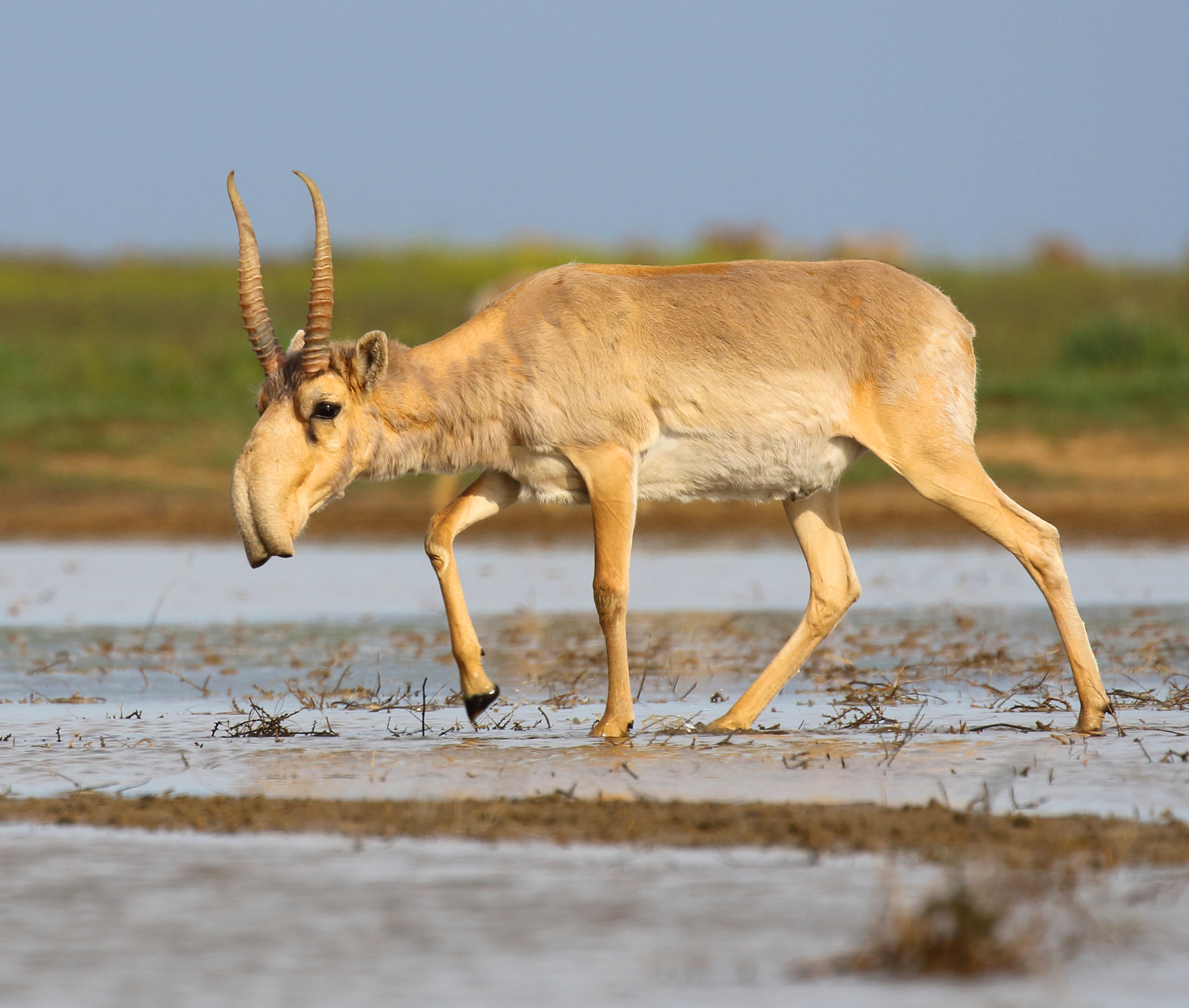
Saiga antelope. Image credit: Andrey Giljov, Creative Commons
The saiga antelope migrates in winter and can be found in the northeastern part of the ecoregion in Uzbekistan as well as entering the Kaplankyr Nature Reserve, northeast Turkmenistan. In this reserve, there are also populations of goitered gazelles and successful reintroduced Asiatic wild ass. Other critically endangered species in this ecoregion include sociable lapwing, which migrates through this area. Endangered species include steppe eagle, Egyptian vulture, and Uzbekistan toadhead agama. The latter occurs mainly along the lower Amudarya River, and in between the two ecoregion segments, however, it has also been found in the interior of the Karakum desert, in a locality known as the Gamyshly well.
There are several desert species which are sandy desert specialists, such as the sand cat. This small feline is known to be able to withstand scorching temperatures in summer and freezing temperatures in winter and they dig dens to escape the sun and hunt gerbils and jerboas at night.
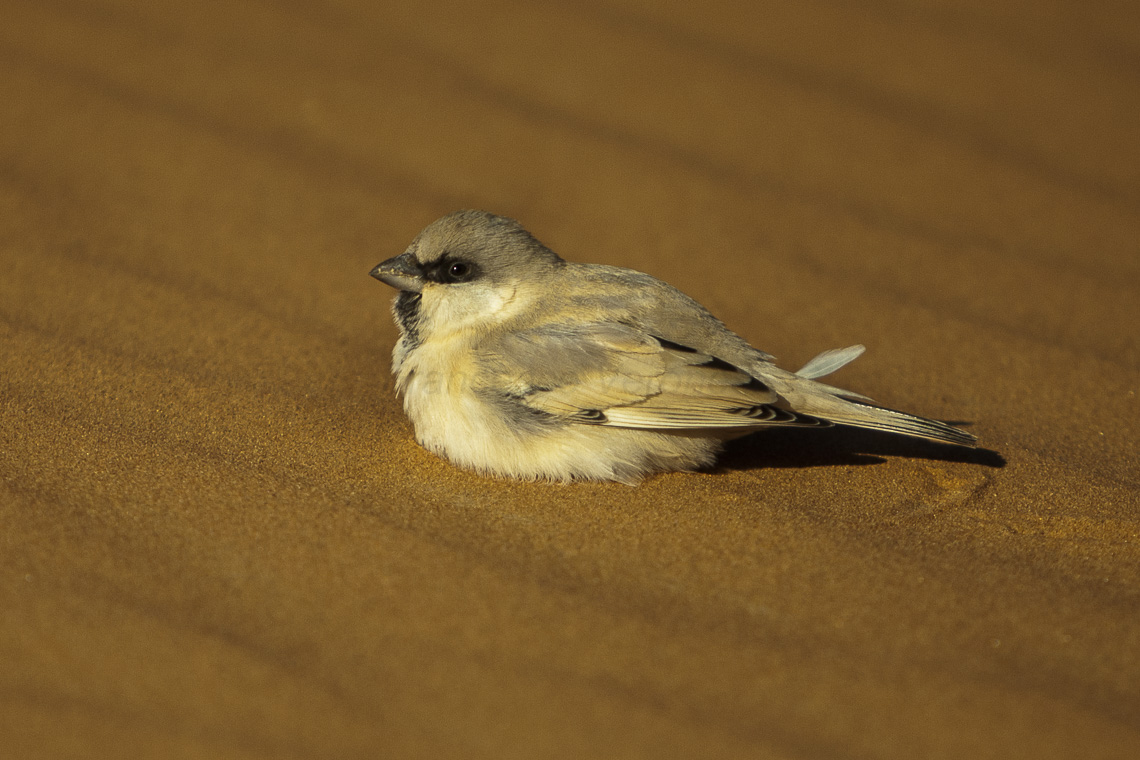
Desert sparrow. Image credit: Francesco Veronesi, Creative Commons
There are several protected areas in this ecoregion, with varying categories of conservation and use. In Turkmenistan, the already mentioned Kaplankyr Nature Reserve is in Category II a, created in 1979 to conserve desert and lake ecosystems and covers 2,828 km2. It is an essential site for migrating goitered gazelles and saigas. Adjacent to this area is Shahsenemsky Nature Sanctuary, which is also an Important Bird Area because of the avifauna of the Sarygmysh Lake.
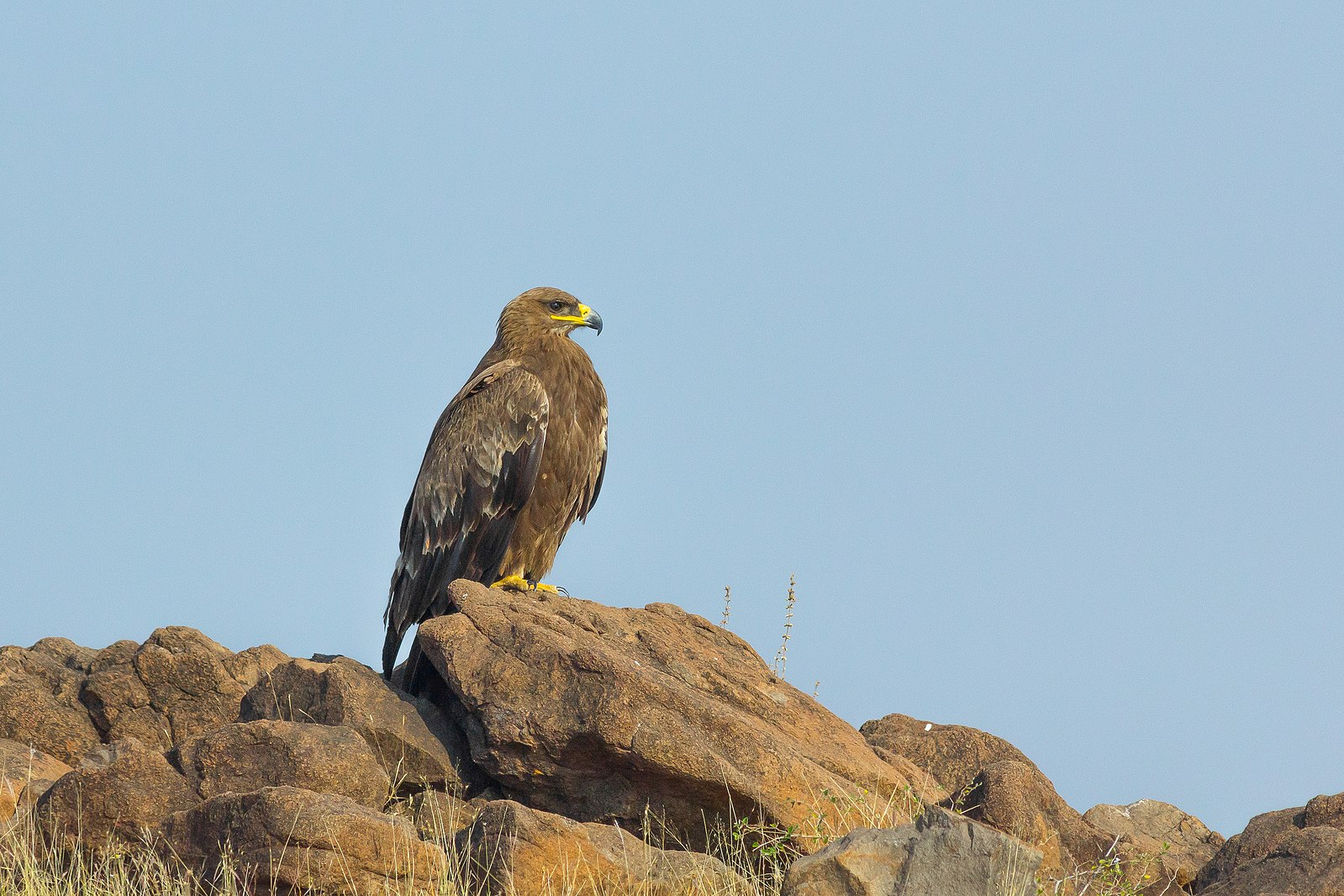
Steppe eagle. Image credit: Creative Commons
The Uzbekistan and Kazakhstan part of the ecoregion has no formal protected area but various Important Bird Areas. The Dengizkul Lake in Uzbekistan, for example, is classified as “in danger” as gas extraction in the area is increasing, with the construction of more infrastructure that will impact local biodiversity. This area has also been designated as a Ramsar site. Also in Uzbekistan, and with under “very high” threat, is the Talimardzhan Reservoir due to issues with water management and water abstraction. The use of fixed nets in shallow waters to capture local waterfowl exacerbates the constant pressure of people and boats using the lake on local wildlife. Nonetheless, currently this ecoregion is mostly intact; desert areas with croplands cover less than 6% of the total area, and the population density is less than 0.1 inhabitants per hectare.
The main threats to biodiversity here are agricultural expansion and intensification—e.g. farming irrigated cotton which is a water-hungry crop—livestock farming and ranching, poaching, and unsustainable firewood collection of saksaul (e.g. in the Karnabchul IBA region). Fishing and harvesting of aquatic resources (e.g. in Ayakaghytma lake). Organized hunting of houbara bustards by foreigners and commercial collecting of the Russian tortoise are common.
The priority conservation actions will be to: 1) effectively implement existing protected areas management plans and design updated plans; 2) strengthen law enforcement regarding the use of natural resources; and 3) develop or enhance existing biodiversity monitoring systems.
Citations
- Zonn, I.S. and Esenov, P.E. 2012. The Karakum Desert. In The Turkmen Lake Altyn Asyr and Water Resources in Turkmenistan (pp. 23-37). Springer, Berlin, Heidelberg.
- Gorelov, Y.K., 2001. Turkmenistan. Antelopes. Part 4: North Africa, the Middle East, and Asia. Global Survey and Regional Action Plans, p.150.
- Magin, C. and Mickelburgh, S. 2002. Biodiversity strategy and action plan for Turkmenistan.
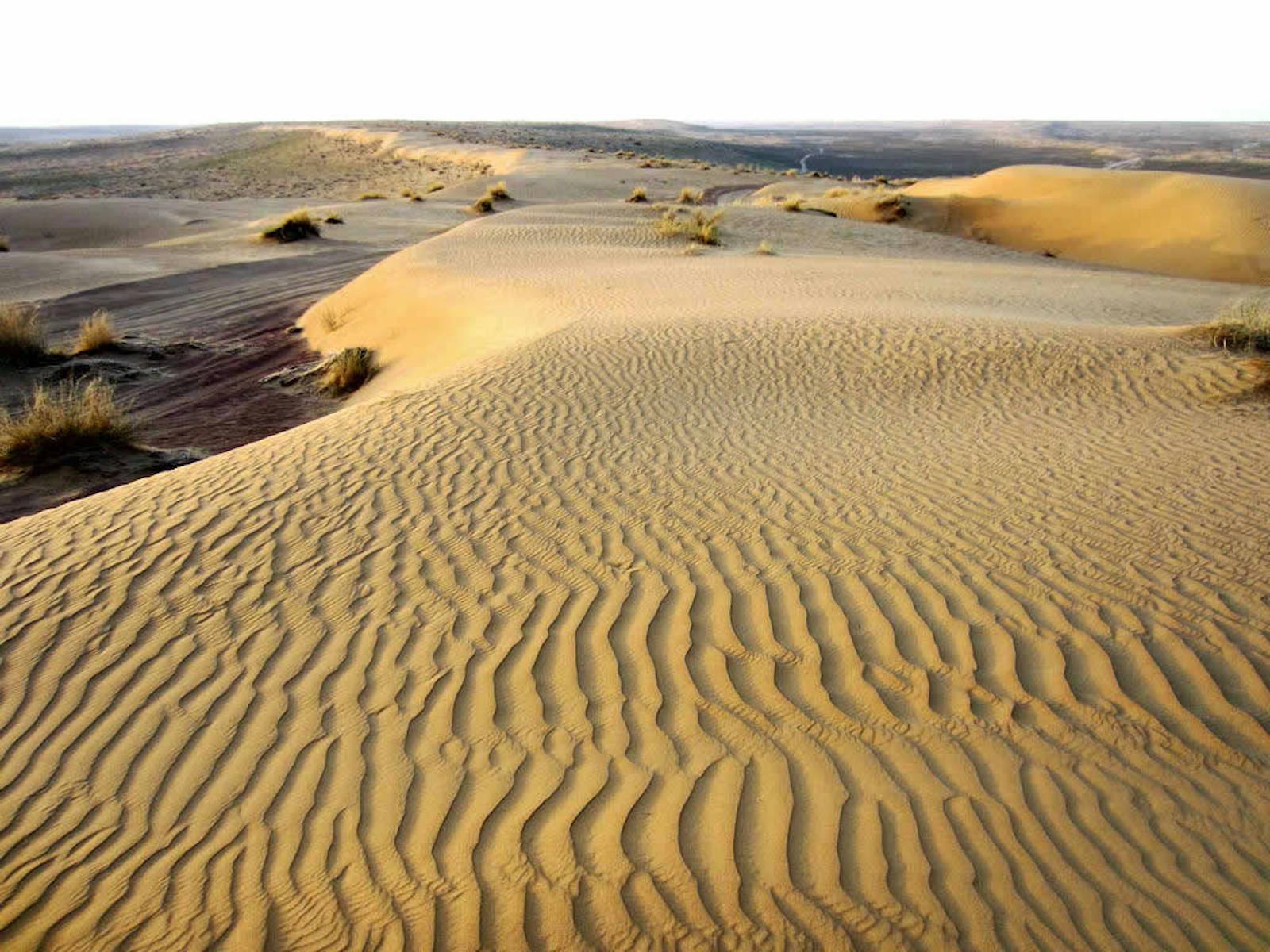
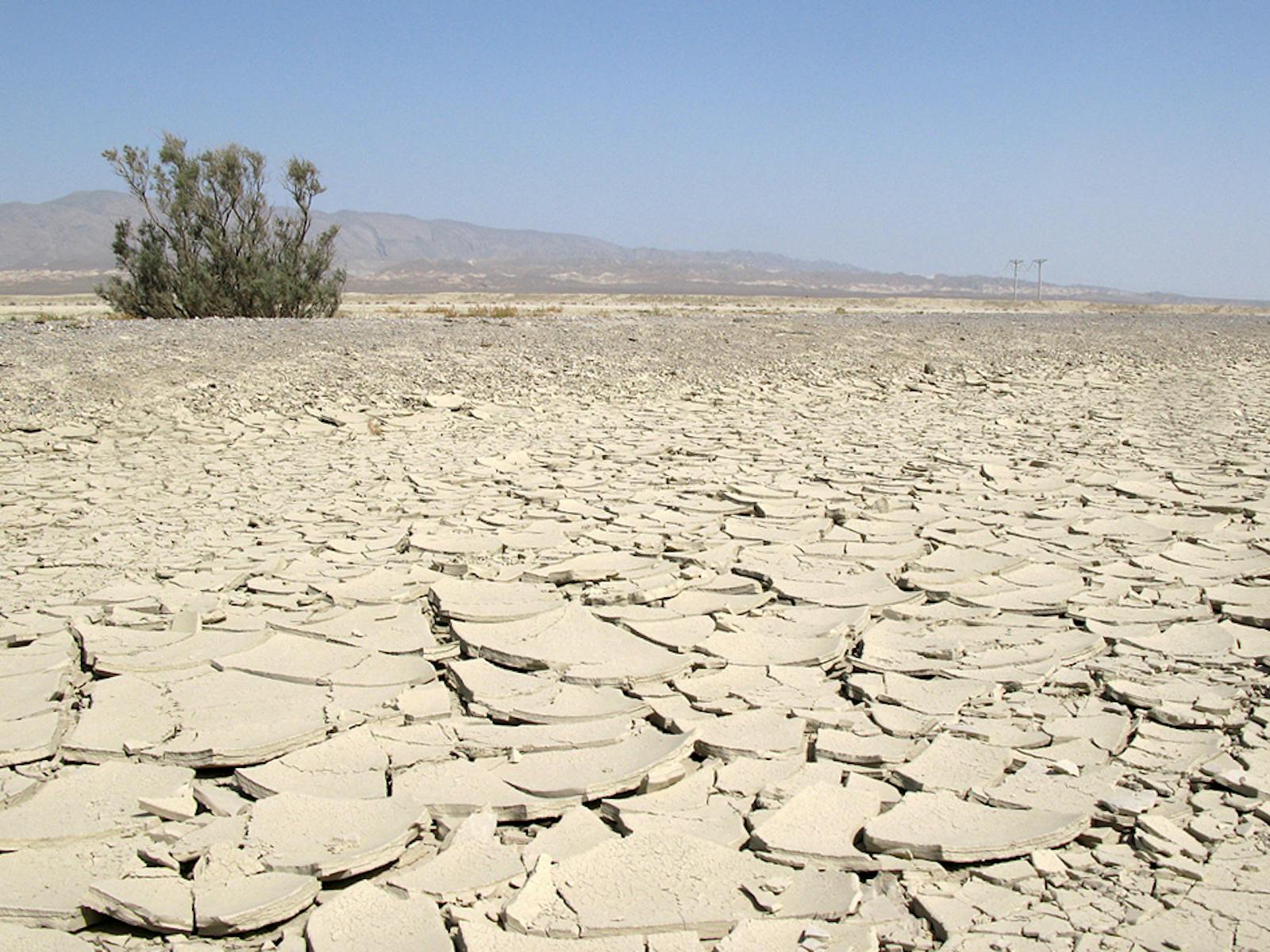
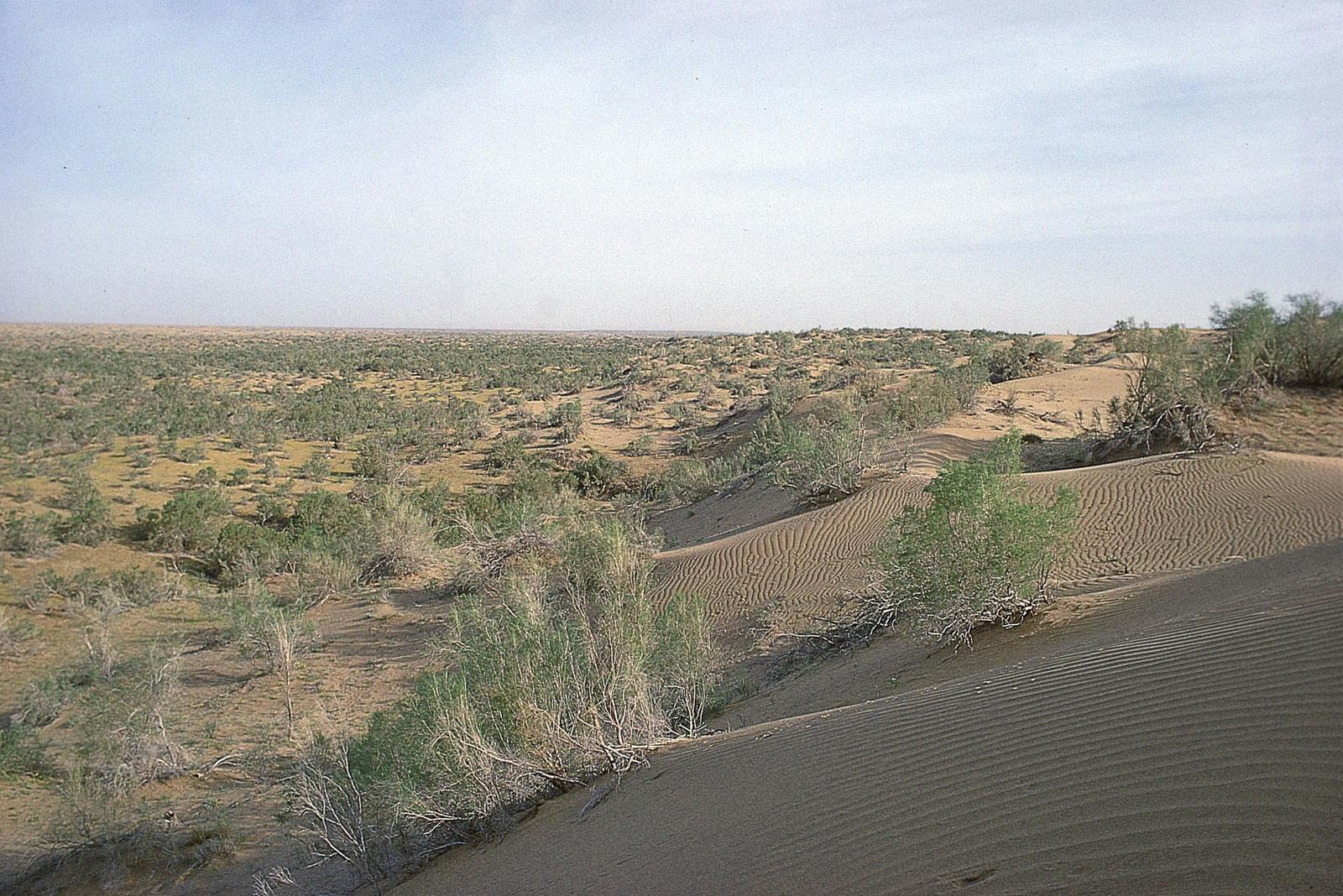
.png?auto=compress%2Cformat&w=300)

